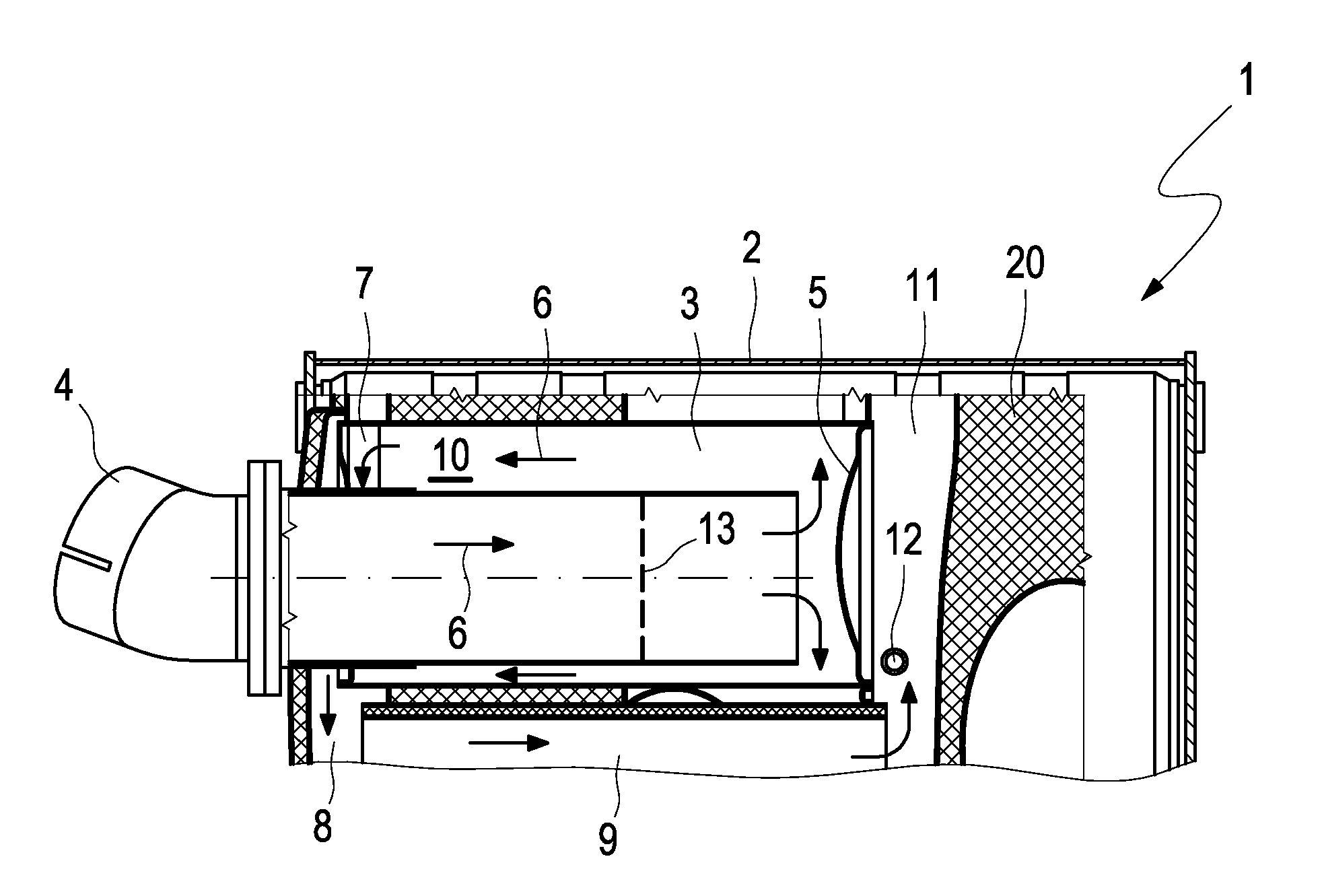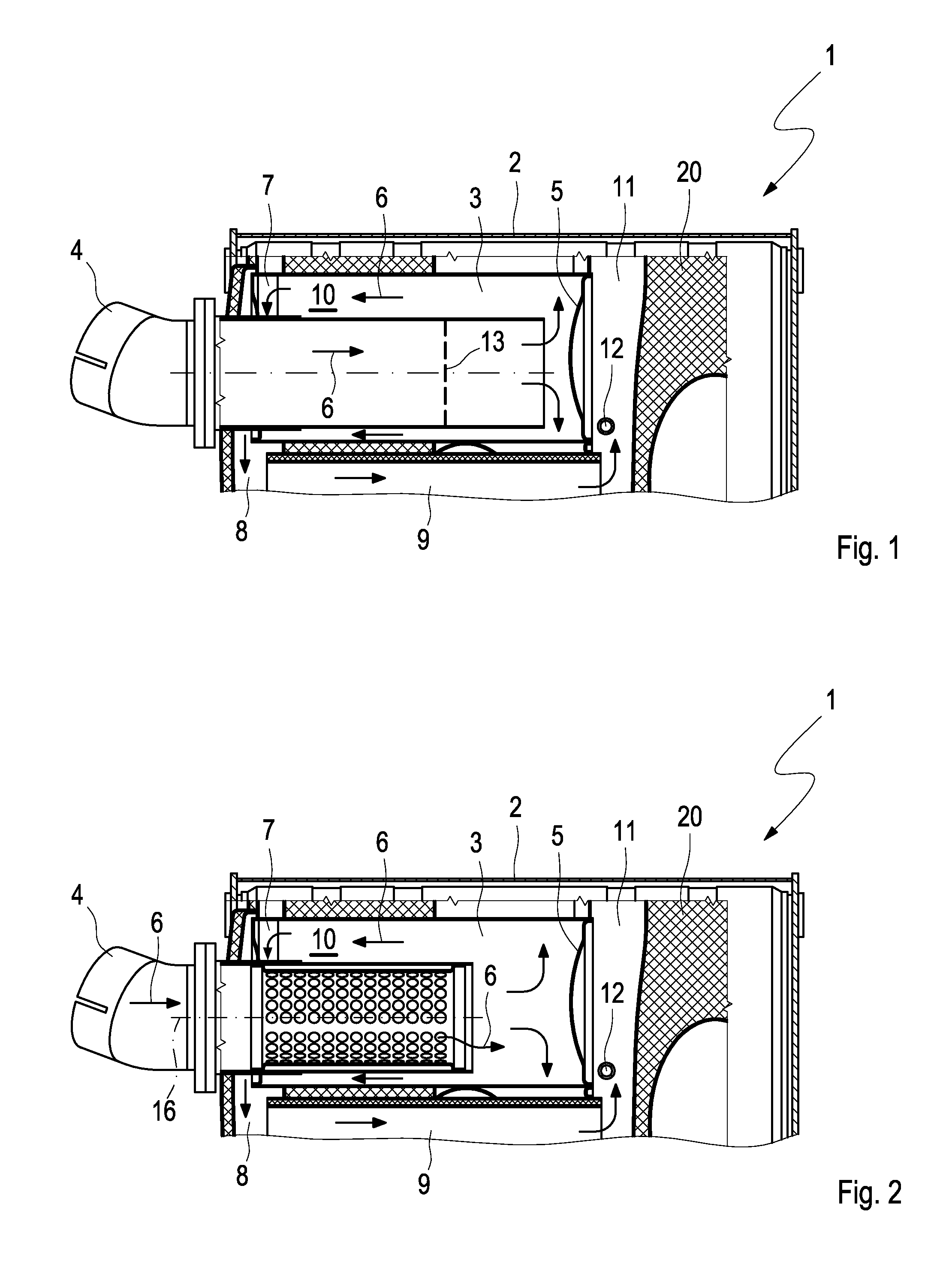Exhaust gas aftertreatment device for an internal combustion engine
an exhaust gas aftertreatment and engine technology, which is applied in the direction of engines, machines/engines, mechanical apparatus, etc., can solve the problems that the mixing of urea and the exhaust to be cleaned cannot be adequately accomplished, and achieve good and thorough mixing, and reduction of nitrogen oxides
- Summary
- Abstract
- Description
- Claims
- Application Information
AI Technical Summary
Benefits of technology
Problems solved by technology
Method used
Image
Examples
Embodiment Construction
[0021]According to FIG. 1, an exhaust gas after-treatment device 1 for an internal combustion engine (not shown) has a housing 2 into which penetrates an exhaust pipe 4 that opens into a mixing chamber 3. The mixing chamber 3 is designed in the form of a pot and has a curved baffle plate 5 in all embodiments. This baffle plate 5 may have a sintered metal plate, for example or may be designed as such. The mixing chamber 3 serves to thoroughly mix the exhaust gas which is flowing into the exhaust gas after-treatment device 1 and to which a reducing agent such as urea has previously been added. For successful removal of the nitrogen oxides present in the exhaust gas, the exhaust gas must preferably be mixed homogeneously with the reducing agent, e.g., the urea. As shown in FIG. 1, the exhaust gas flows from left to right through the exhaust pipe 4 into the mixing chamber 3 along the flow arrows 6. The pot-shaped design of the mixing chamber 3 causes the inflowing exhaust to undergo a r...
PUM
 Login to View More
Login to View More Abstract
Description
Claims
Application Information
 Login to View More
Login to View More - R&D
- Intellectual Property
- Life Sciences
- Materials
- Tech Scout
- Unparalleled Data Quality
- Higher Quality Content
- 60% Fewer Hallucinations
Browse by: Latest US Patents, China's latest patents, Technical Efficacy Thesaurus, Application Domain, Technology Topic, Popular Technical Reports.
© 2025 PatSnap. All rights reserved.Legal|Privacy policy|Modern Slavery Act Transparency Statement|Sitemap|About US| Contact US: help@patsnap.com



